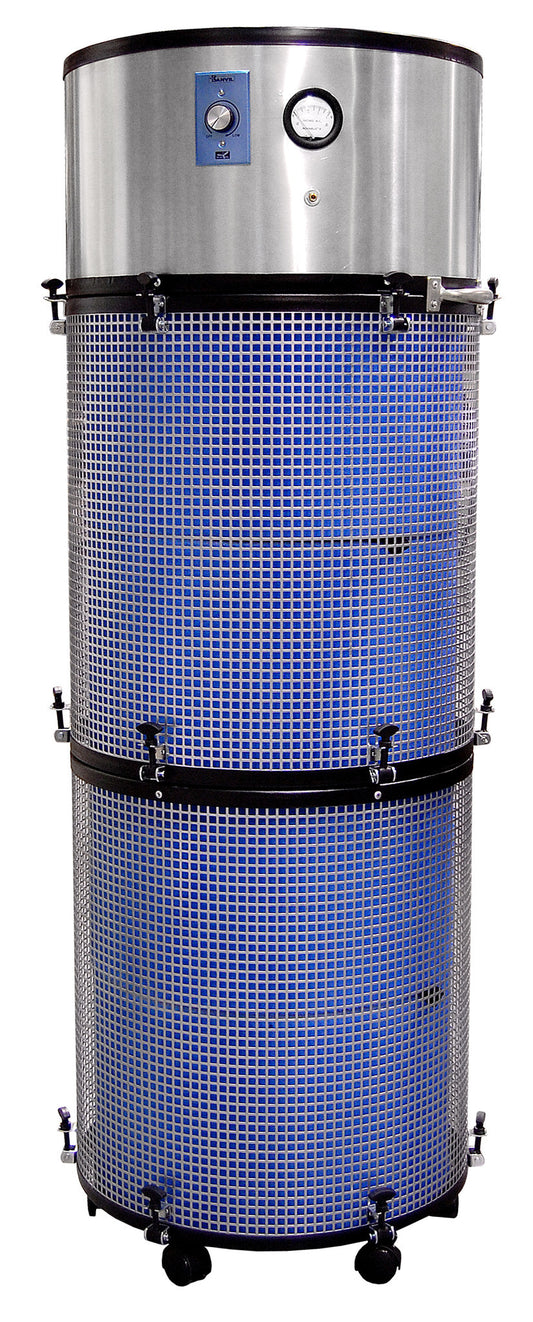Collection: Solutions for Dust and Particle Pollution
Dust is more than just a nuisance
Dust is a fact of everyday life - at work as well as at home. It often comes from larger masses of the same material being ground, cut, drilled, crushed or otherwise manipulated. Inorganic dusts are silica, asbestos, and coal, for example. Organic dusts come from plants or animals. 
Dust particles are measured by the micron (one micron equals 1/25,400 of an inch). Those large dust particles that are visible to the human eye are about 10 microns in diameter. Fine particles that can lodge in your lungs and wreak havoc are about .3 micron in size. In comparison, a sharp pencil dot is about 200 microns in diameter.
There are many occupations where exposure could be harmful to workers’ health, including
- Construction, renovation and building industries
- Mining, quarrying and tunneling
- Textiles
- Firefighting
- Chemical industries (e.g. manufacture of cleansing agents, rubber, pharmaceuticals)
- Food industry (baking)
- Agricultural work
- Woodworking
- Manufacture or handling of glass, stone and ceramics
According to the World Health Organization, it is usually fair to assume that a dust cloud that is visible to the naked eye may represent a hazard. However, a lack of a visible cloud does not necessarily mean “safe” conditions as a respirable particle is too small to be seen with the unaided eye.
The human body is very efficient when it comes to protecting itself from dust pollution, using the nose, respiratory tract and defence cells to remove pollutants. The dust is then often coughed up, spat out or swallowed.
However, excessive inhalation of dust may result in disease. Health authorities have reported that dust particles may cause fibrosis or allergic reactions in the lungs, while certain chemical dusts can cause cancer or acute toxic effects.
How to minimize risks of dust exposure
Occupational health and safety guidelines call for a wide range of safety processes to minimize dust exposure, including the use of less hazardous materials, using wet processes, keeping dust-producing processes in a separate space under negative air pressure (slight vacuum compared to the air pressure outside the enclosure), exhausting air containing dust through a collection system before emission to the atmosphere, replacing brooms with vacuums, regular cleaning and controlled disposal of dangerous waste. 
Personal protective equipment helps to reduce the risks as well, but they should be a last resort, experts say, not a substitute for proper dust control. In fact, when used on a long-term basis, personal protective equipment may actually backfire in terms of productivity: It could reduce a worker’s vision or mobility, it needs to be checked if used correctly, it could be uncomfortable and irritating and it could even create new hazards.
Electrocorp has designed a wide range of air purifiers with HEPA filters that remove fine particles from the ambient air and have become an invaluable part of proper dust control measures. Electrocorp’s most recommended units for dust include:
Air Rhino - a versatile air cleaner with a bag filter for larger particles, or activated carbon and HEPA filters for fine particle and chemical air filtration
Air Rhino Jr. - particle and chemical filtration at its best - and this unit can also create a negative air environment
I6500 XL80 with Cyclone Collector - removes fine dust quickly and efficiently. This unit was designed specifically for heavy-dust environments
RAP series - Powerful stand-alone air purifier with carbon and HEPA filters, designed for 24/7 use
RSU series - Small-footprint air cleaner with Carbon + HEPA options, designed for quick and efficient air cleaning
Are you in need of a serious air cleaning solution for your workplace?
Call us for a free consultation: 1-866-667-0297.




